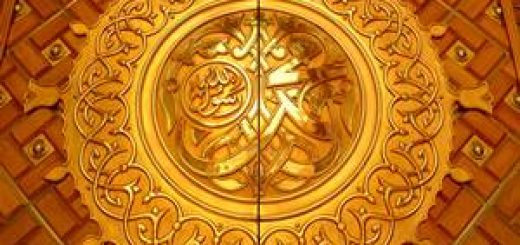Is the American Dream Dead? Can Asians Think? – By Athar O.
The other day I was reading an interesting book by a leading American anthropologist and thinker, Jeremy Rifkin, titled “The European Dream” and with a catchy subtitle “How Europe’s Vision of The Future is Quietly Eclipsing the American Dream”. But it is not the coming of age of the European dream but rather his illustration of the death of the American dream that got me interested. Having lived in American for almost 6 years now, and in no usual home-to-work-to-supermarket-to-home-and-back-all-over-again circumstances that constitute the typical experience of a non-immigrant “alien”, I have become interested in and aware of the several social, political, and economic problems that are eating the roots of this society as well as the good things going for America. I have been fortunate enough to have both the time and energy to think deeply about, research, and analyze some of this society’s most important problems from a unique intellectual vantage.
It was with this background that I approached the central thesis of the book. The author starts by describing the central foundations of what, he believes, were the founding principles of America and what it means to “live” an American dream. These, in the view of the author, are the notions that, a) somehow Americans are a “chosen” people especially ordained by God to live the American dream that would be exclusive to the Americans and hence can only be lived in the American soil, and b) America stands to provide equal opportunity to its citizens to pursue happiness and freedom–that comes from material well-being and ownership of property–and to let them “be all they can be”. The foundations of these long-held beliefs can be traced back to the history of America’s founding.
Historical Underpinnings of the American Dream
The American dream, as we know it, is really built on two pillars, one moral and the other material. The first pilgrims that arrived at the American continent in the 1600s were protestant reformers who had migrated to get away from the tyranny of the English and the Catholic Church. They saw themselves as the “new Israelites” that were being delivered to the Promised Land and were now embarking on God’s mission to bring light to the world. The second element of the foundation on which the American dream is built was championed by no other than the likes of Benjamin Franklin who was inspired by the “European enlightenment with its emphasis on materialism, utilitarianism, and individual self-interest in the marketplace”. As America’s pre-eminent scientist and reformer, Franklin envisioned a country that could be a kind of a laboratory for the exploration of science and technology. His vision was also inspired and received further strengthening from Calvinist beliefs that required individuals to continually improve themselves as the only way to serve God honorably and discharge their duties to Him.
In the initial years or even decades of America’s founding, these twin pillars that made the foundations of the American society seemed to do well for the American people. America clearly pioneered the concept of religious freedom in a manner that was unknown to its predecessors (i.e. Europeans). Furthermore, aided by continental-scale resources and its embracing of equal opportunity and meritocracy, Americans also put the ideas of personal improvement, work-ethic, and productivity to their advantage. Not only did these twin ideas bring about a revolution in America but also became a trigger for subsequent revolution in France and, in a less dramatic manner, the rest of the Europe and the world.
America’s Religious Credo: The “Chosen People”
In many ways, the moral and material foundations of the American dream seem to have paid off for many Americans. Jeremy Rifkin cites a number of statistics to make that point and to further elaborate upon it. He maintains, for example, that Americans are much more religious people than Europeans and substantiates that claim with a fairly diverse set of opinion poll data from across the US and Europe. For example:
* 58% of Americans believe that the strength of the American society is “predicated on the religious faith of its people”. 85% of Americans believe God is important to them while more than 50% of Europeans say that God is not important to them.
* Thirty six percent of Americans pray several times a day, an additional 22% pray at least once a day. At least 45% attend religious services at least once a week. Less than 10% of populations in major European Countries attend services once a month.
* Six out of ten Americans think religion is a “very” important factor in their day-to-day life while very few people in Europe believe that to be the case, starting from a third in Poland and Italy, to 21% in Germany, 16% in Great Britain, 14% in France, 11% in Czech Republic, 10% in Sweden, and 9% in Denmark.
Taking the figures put forth by Rifkin at face value, it does seem that Americans are more religious, generally, than an average European. However, there is a major caveat to this statement. The “moral certainty” that comes with American-style religiosity (i.e. being God’s “chosen people”) also paves way for significant corruption and even tyranny especially towards fellow human beings who, by a stroke of luck, are born outside the continental United States. This is often expressed in the much maligned US foreign policy when America chooses to paint every geo-political conflict in the shape of a “good-vs.-evil” battle. Whether it is the cold war against the “evil” communists, the “crusade” on terrorism (“you’re either with us or with them”) or the definition of the axis-of-evil, the moral certainty introduced due to the religious dimension of the American dream deprives Americans to see their own actions and their relationship with the rest of the world in an objective and dispassionate manner. The result is self-evident and a source of great distress for those around the world. It also feeds back into this equation to make it a self-fulfilling prophecy.
America’s Socio-Economic Credo: Equal Opportunity and Unbridled Capitalism
On the material aspect of the American dream, however, things are in much more stark decline. Rifkin argues that the American dream is becoming an American mirage for a vast majority of the country’s population. He presents several pieces of evidence to support that argument. For example:
* While 55% of all young Americans believe that they will get rich, only 71% think they’ll be able to do so within their present jobs. Income inequality is large and growing. America ranks 24th among developed nations on income inequality–only Russia and Mexico being lower!–and jobs and income growth has been lower than European countries.
* Seven out of ten Americans have engaged in some form of legal gambling in the last year. Gambling has grown at 9% over the past decade, far outstripping the growth of the American economy as a whole. 3 million Americans are “lifetime” pathological gamblers and another 10 million are “problem gamblers”. Forty-seven states today legalize gambling and casinos up from one state in the 1950s.
* Upward mobility–a corner stone of the American dream up until 1960–has also become a mirage by the late 1990s. In America, for example, seventeen percent of people live below the poverty line– as compared to 5% in Finland, 6.6% in Sweden, 7.5% in Germany, 8% in France–making it a land of opportunity for a few and misfortune for a vast number of people. Walmart, America’s largest company and probably the biggest private employer, pays below poverty-line wages to its average employee.
On the social front as well, the American experiment doesn’t seem to be heading in the right direction:
* The divorce rate in America is, on average, around 50%. For the poor, this can shoot upto 70%. 7 of every 10 children in America are born out-of-wedlock and the number of single mothers have soured in the recent decades. 50% of all old women would spend the last years of their lives in a nursing home and half of these would not be visited in that last year by a member of a family.
* One in four Americans believe that the use of force to get what one wants (read as “bullying”) is a normal behavior a figure much higher than, say, in Canada where only 12% people believed so. This number is also increasing measurably over time.
* Nearly 2% of potential male adult population in America is incarcerated. American jails hold nearly 2 million criminals at the rate of 685 prisoners per 100,000 people as compared to European average of only 87! Yet crime rates are much less in Europe than in America ( 1.7 homicides per 100,000 vs. 6.26 for America).
* Americans spend much higher on healthcare than Europeans yet suffer from higher rates of disease than their European counterparts. For example, more than 30% of Americans today are clinically obese while only 11.3% Europeans are so categorized.
Whatever Happened to the American Dream?
It is no wonder then that a large number of Americans are giving up on the American dream. They have followed the sacred script–kept their faith, worked hard, applied themselves, improved their skills, saved and sacrificed for the better future of their children, served their communities–only to be left short of their aspirations. While 51% of Americans believe that it is possible to live the American dream, more than a third (34%) think it is no longer possible. In other aspects of quality of life as well, the American dream is slowly but surely slipping away from the grasp of the ordinary Americans.
Rifkin presents an interesting explanation for why that might be so. According to his view, the American dream–which essentially was the European Dream version-1, since it was conceived by a group of Europeans who migrated to America in the 1600s–was really based on the worldview of the seventeenth century and has since lost touch with the changing realities of the world. It is a dream that has gone too far in its rigid application of its basic religious and free-market principles to the extent and has thus come to manifest its worst features, namely, unbridled moral certainty and individual freedom, exclusivity ( i.e. the “chosen people), and cut-throat “sink-or-swim” capitalism and lost the more humane aspects. It is a dream that is in dire need of a renovation that might, in the words of the author, once again come from across the Atlantic.
Can Asians Think (and Dream)?
What does this mean for us, Asians? The American dream, in one form or the other, has been a source of inspiration for many amongst us. The cultural invasion (a.k.a. Hollywood and consumerism) further exacerbates the trend. There is no dearth of Pakistanis, Indians or other Asians standing in front of American Embassies around the world waiting for visas to migrate to the “land of the opportunity”. Increasingly, the Indian “dream”, if there is one, is emerging very much in the fashion of the American dream. The relatively well-to-do areas in India are as obsessed with American-style consumerism as are the Americans. This phenomenon, for instance, was all too apparent in Thomas Friedman’s book, ‘The World is Flat’. Yet, the recent defeat of BJP’s “India Shinning” campaign is a stark reminder of the disconnect between the dreams of India’s middle class and the ground realities of the real India–the 800 million people who live under $2 / day. Perhaps same is the case with China and, to a lesser extent, Pakistan.
Recently, I was in Malaysia for a short trip and it was instructive to see the similarities between Malaysian development experiment and the American experience. Not only was American-style consumerism the “in thing” in Malaysia but one could not help not notice Malaysians’ obsession with the American cultural and political symbols. From the multi-stripe Malaysian Flag, to their Freedom Memorial, to the Mount Rushmore-like Butik PM, to the Petronas “twin” towers in Kuala Lumpur, Malaysians have done a great job in embracing American-style consumerism and capitalism with all its symbols, goods, and possibly bads. And this is a country that has been one of the most vocal critics of the United States!
The question then is: Given Rifkin’s argument, if the American dream is doomed to failure, what is the prescription for the countries (India, Pakistan, Malaysia, China, and others) that are now trying to pull their own populations from poverty and deprivation and are thus either looking for role-models to emulate or trying to create their own? Is American-style capitalism the only development paradigm, as Chinese example seems to suggest? Is it an interim stage that everyone must go through to earn a right-of-passage to a developed status, as Malaysia and India’s example seems to suggest so? Can anyone learn something useful from the rise and fall of the American dream or from Europe as is tries to create European Dream version-2? In short, and most importantly, as Kishore Mabhubani so aptly puts it, can Asians think (and dream)? Our ability to learn from the successes and failures of other countries and creating our own development paradigm would be critical to reaching our own development goals in the most cost-effective manner. If there is one benefit of living in the twenty-first century, this is it. It would be a difficult undertaking given America’s intellectual hegemony over the world but it is certainly worth a shot.













